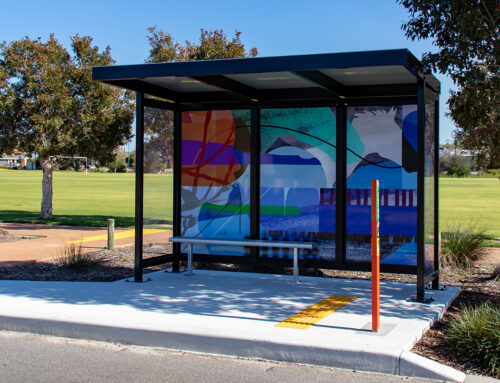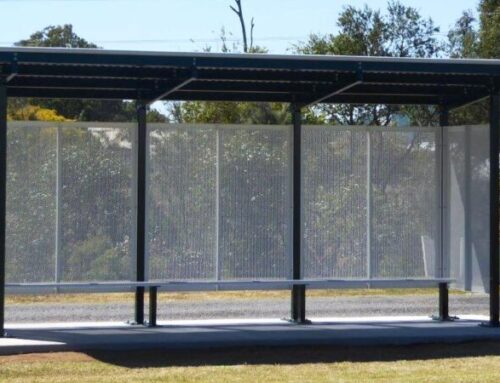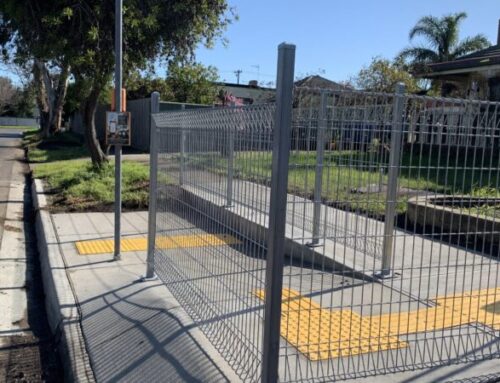Melbourne’s public transportation system is a comprehensive network that serves as the backbone of the city’s mobility, seamlessly connecting its diverse neighbourhoods and facilitating access to its vibrant cultural, educational, and commercial centres. Comprising trains, trams, and buses, this integrated system is designed to offer residents and visitors alike efficient, affordable, and eco-friendly options for navigating the city. The iconic trams, in particular, not only add to Melbourne’s charm but also represent one of the largest tram networks globally, offering extensive coverage within the city and its suburbs. The train network, with its numerous stations and lines, efficiently connects outlying suburbs to the central business district, enabling commuters to travel with ease. Buses complement these services, reaching areas less accessible by tram or train, and ensuring that the transportation network blankets the entire city. Managed by Public Transport Victoria (PTV), the system emphasises connectivity and convenience, aiming to reduce reliance on private vehicles and support the city’s sustainability goals. With ongoing investments in infrastructure, technology, and service enhancements, Melbourne’s public transportation system continues to evolve, striving to meet the growing demands of its dynamic urban landscape.
Importance of Bus Stops in Urban Planning and Public Transport
Bus stops play a pivotal role in the ecosystem of urban planning and public transportation, serving as critical nodes that connect individuals to the broader network of city life. Their importance is multifaceted, impacting not just the efficiency of the transport system but also the accessibility and livability of urban environments.
Firstly, bus stops are essential in promoting public transport use, acting as the interface between the city’s residents and its transport services. By offering easy-to-reach and strategically placed transit options, they motivate individuals to choose public transportation instead of private cars, thus diminishing both traffic jams and environmental pollution. This shift is crucial for cities aiming to achieve sustainability targets and improve air quality.
Moreover, bus stops contribute significantly to urban accessibility. Strategically placed bus stops ensure that public transport serves all parts of a city, including residential areas, commercial districts, educational institutions, and healthcare facilities. This inclusivity fosters social equity, allowing people from various socio-economic backgrounds to access essential services and opportunities.
In terms of urban planning, bus stops are instrumental in shaping the development patterns of cities. They often become focal points around which commercial and residential areas develop, creating vibrant community hubs that stimulate economic activity. This phenomenon, known as transit-oriented development (TOD), leverages public transport infrastructure to encourage denser, mixed-use developments that are walkable and bicycle-friendly, further enhancing the urban experience.
Bus stops also offer opportunities for urban design and community engagement. Well-designed bus shelters can enhance the streetscape, providing not only functional spaces for passengers but also incorporating elements such as public art, greenery, and digital information screens. These features improve the overall aesthetics of the urban environment and can foster a sense of community and place.
Background Information
The current state of bus transportation in Melbourne reflects a dynamic and evolving landscape, with a notable shift towards sustainability and enhanced service delivery. The Victorian Government, recognising the importance of environmentally friendly transport solutions, has embarked on trials of zero-emission buses (ZEBs) across both metropolitan and regional areas. This initiative saw the introduction of electric buses by Latrobe Valley Bus Lines in Traralgon, Seymour Passenger Services in Seymour, and Ventura in the northern suburbs of Melbourne, with a complete transition of Ventura’s Ivanhoe depot to battery electric buses (BEBs). Furthermore, Transit Systems Victoria has introduced both BEBs and hydrogen fuel cell buses (HFCBs) in the West Footscray area, marking a significant step towards reducing greenhouse gas emissions and other pollutants.
This shift towards zero-emission vehicles is part of a broader strategy to modernise Melbourne’s bus fleet, with the Victorian State Budget allocating $20 million in funding for the research, planning, and trials of ZEB technology. The trials are aimed at gathering valuable insights to inform the procurement of only zero-emission buses from 2025 onwards, underscoring the state’s commitment to sustainable and efficient public transport solutions.
The push for zero-emission buses is complemented by a historical context of Melbourne’s bus services, which have evolved significantly since the early 20th century. The city’s bus transportation history dates back to the Melbourne Motor Omnibus Co Ltd, the first motor bus operator in Melbourne, which began operations in 1912. Since then, Melbourne’s bus services have expanded and diversified, playing a crucial role in the city’s public transportation network alongside its trams and trains.
Today, Melbourne’s bus network is extensive, with various operators providing services across the city and into its suburbs. Operators such as Ventura Bus Lines and Transit Systems Victoria, among others, serve a wide range of routes, contributing to a comprehensive and accessible public transportation system that caters to the needs of Melbourne’s residents and visitors.
Sources:
https://www.vic.gov.au/metro-and-regional-buses
https://en.wikipedia.org/wiki/Buses_in_Melbourne
https://en.wikipedia.org/wiki/Transport_in_Melbourne
Number of Bus Stops – In Melbourne, the bus network is extensive, covering various routes to serve both the metropolitan and regional areas. As of the latest information, there are 367 bus routes operated in Melbourne, utilising 18,571 bus stops to provide widespread access throughout the city and beyond (Source). This extensive network underscores Melbourne’s commitment to public transportation and accessibility, offering a broad range of service frequencies, including night network services (Source). The diverse range of bus routes ensures that residents and visitors can rely on buses to reach their destinations conveniently, highlighting the city’s dedication to enhancing public transport connectivity (Source).
Challenges Faced by Commuters – Commuters in Melbourne also deal with limited coverage in certain areas, making it difficult to access public transport from more remote or newly developed suburbs. Safety and security concerns, especially during late hours, can deter use. Service performance and comfort can be affected by environmental factors like severe weather conditions. Lastly, the integration between different modes of transport and the need for multiple transfers can complicate journeys, making public transport less appealing compared to private vehicles. Addressing these challenges requires a multi-faceted approach, focusing on service expansion, reliability improvements, infrastructure upgrades, and enhanced security measures.
Recent Initiatives or Proposals for New Bus Stop Constructions
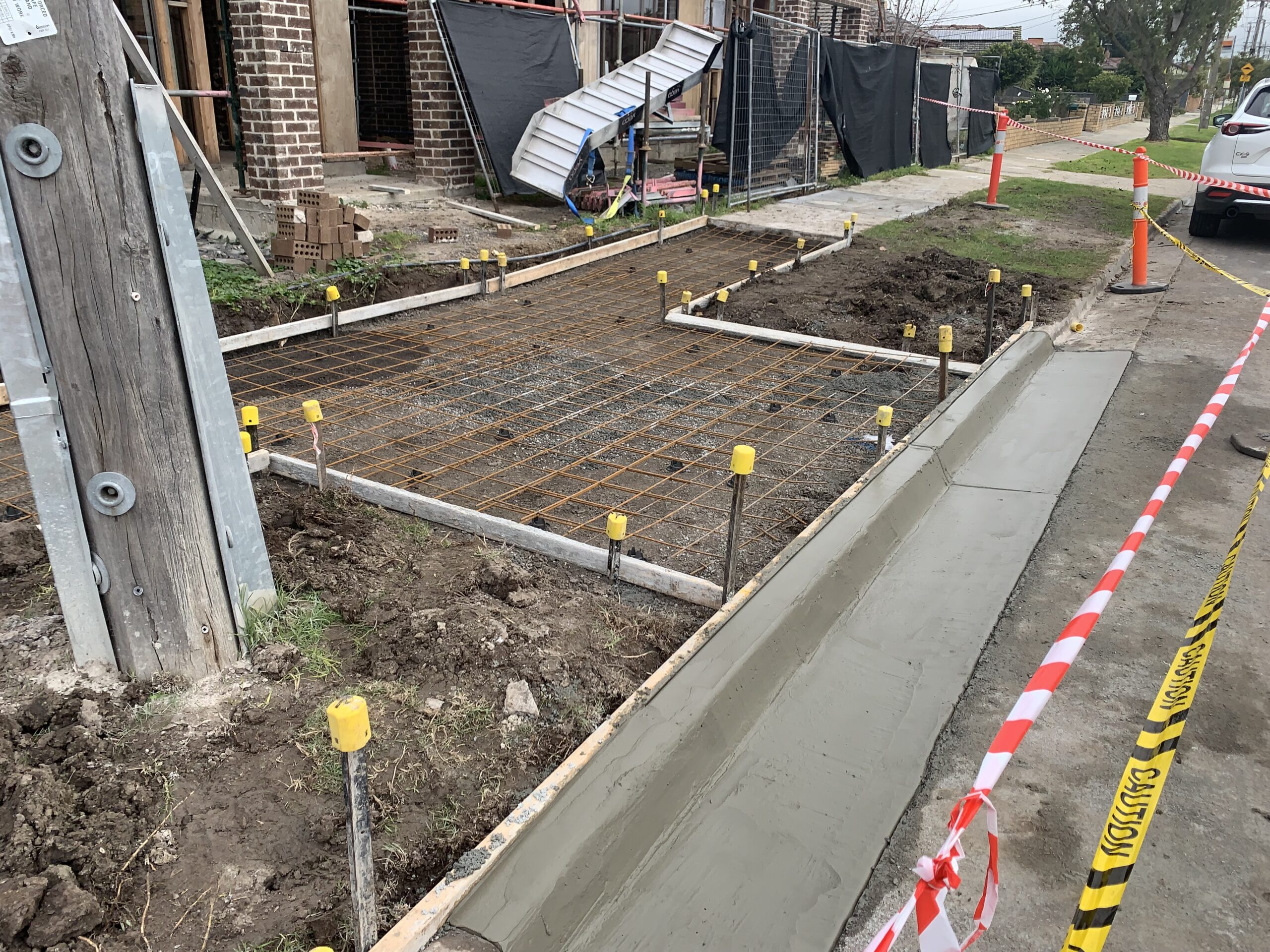
Recent initiatives and proposals for new bus stop constructions in Melbourne are part of the larger infrastructure projects managed by the Victorian government. These initiatives are integrated within Victoria’s Big Build, which encompasses a wide range of transport and infrastructure projects aimed at enhancing connectivity and accessibility across the state. While specific details on new bus stop constructions were not directly found, it’s clear that the ongoing projects like the Metro Tunnel Project, North East Link, Suburban Rail Loop, and others are set to improve public transportation infrastructure significantly.
For the most current information on specific bus stop construction initiatives or proposals, I recommend checking the Department of Transport and Planning, as they oversee planning, building, operating, and maintaining Victoria’s transport and planning system for use by all. Their strategic plan for 2023-27 could also provide insight into their priorities for public transportation improvements over the next few years.
Additionally, Public Transport Victoria (PTV) provides detailed information on lines, routes, and service updates, which can be useful for understanding any changes to bus services and the potential addition of new bus stops as part of route enhancements or expansions.
For more detailed and updated information, visiting the official websites of Victoria’s Big Build and the Department of Transport and Planning, as well as PTV, would be beneficial.
Sources:
https://www.vic.gov.au/department-transport-and-planning
https://bigbuild.vic.gov.au/projects
https://www.ptv.vic.gov.au/routes
Objectives Behind Adding New Bus Stops
Adding new bus stops in urban planning and public transportation systems is driven by multiple objectives aimed at enhancing service efficiency, accessibility, and overall community well-being. Each point elaborates on the reasons and goals behind these initiatives:
- Improving Accessibility: New bus stops are strategically placed to ensure more residents have easy access to public transport. This includes serving newly developed residential areas, underserved neighbourhoods, or regions experiencing population growth. By reducing the walking distance required to reach a bus stop, the system becomes more user-friendly for a broader audience, especially for individuals facing mobility challenges.
- Enhancing Connectivity: Adding bus stops can link previously disconnected areas to the broader public transport network. This interconnectedness facilitates easier switches among various transportation methods, like buses, trains, and trams, enhancing the system’s overall efficiency and shortening commute durations for travellers.
- Supporting Urban Development: New bus stops can play a crucial role in urban development strategies. By improving public transport accessibility in designated growth areas, cities can encourage more sustainable development patterns, reduce reliance on private vehicles, and promote higher density living closer to public transport hubs.
- Improving Service Frequency and Reliability: Strategically adding bus stops can also improve the frequency and reliability of service. By optimising the network, transit agencies can reduce bottlenecks and ensure more consistent service across different times of the day, making public transport a more reliable option for users.
- Encouraging Public Transport Use: The convenience of an expanded and accessible network encourages more people to use public transport. This may result in decreased traffic jams and diminished emissions, and a decrease in the environmental impact of personal vehicle use, aligning with broader sustainability goals.
- Addressing Equity Concerns: Ensuring that new bus stops are placed in underserved areas can address issues of equity within the public transport system. By improving access in lower-income neighbourhoods, the transport system becomes more inclusive, offering improved transportation choices for all inhabitants, irrespective of their economic background.
- Supporting Economic Growth: Enhancing public transport infrastructure can stimulate local economies. Improved access to transport can increase foot traffic to local businesses, support the labour market by making it easier for people to get to work, and attract investment in areas adjacent to new or improved transport links.
Each of these objectives contributes to the broader goal of creating a more efficient, accessible, and an eco-friendly public transportation system that fulfils the requirements of the community it supports.
Costs Involved in Constructing New Bus Stops
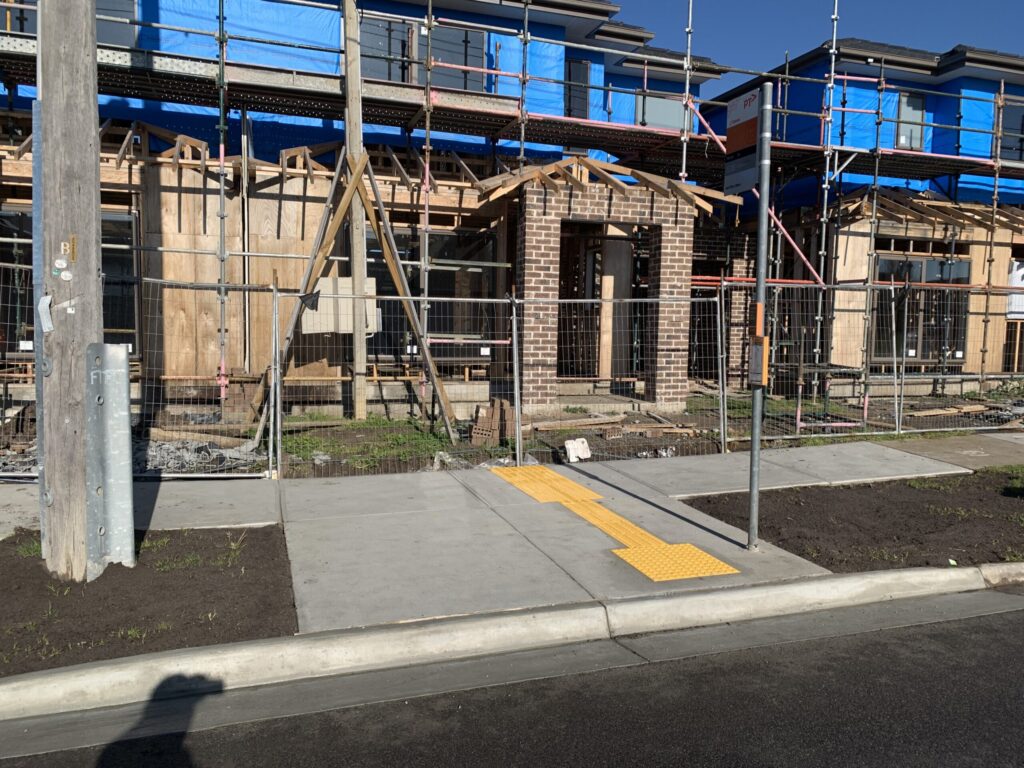
Land Acquisition and Preparation
Land acquisition and preparation are critical initial steps in the construction of new infrastructure, including bus stops, public transportation hubs, and other urban development projects. These processes involve several key activities:
- Identification and Selection of Land: The first step involves identifying potential locations for new bus stops or infrastructure projects. Planners consider factors like accessibility, connectivity, population density, and current or future urban development plans.
- Evaluation and Assessment: Once potential sites are identified, each location undergoes thorough evaluation. This includes environmental impact assessments, geological surveys, and feasibility studies to ensure the land is suitable for development and to identify any potential issues that might need addressing.
- Negotiation and Acquisition: The process of acquiring land involves negotiations with landowners. This might be through voluntary sale agreements or, in some cases, the use of eminent domain or compulsory purchase orders if the land is deemed critical for public use and no agreement can be reached.
- Legal and Regulatory Compliance: Acquiring land for public infrastructure requires adherence to numerous legal and regulatory requirements. This includes zoning laws, planning permissions, and environmental regulations. Public consultations and stakeholder engagement are also often part of this process to address any community concerns.
- Preparation and Clearing: After acquiring the land, the site must be readied for building. This can involve clearing vegetation, demolishing existing structures, levelling the ground, and making initial infrastructure improvements like access roads or utilities.
- Design and Planning: Parallel to land acquisition and site preparation, detailed design and planning for the bus stop or infrastructure project are finalised. This includes architectural designs, engineering plans, and integration with existing transportation networks.
Each step requires careful coordination between multiple stakeholders, including government agencies, urban planners, engineers, environmental consultants, and the local community. The aim is to ensure that new bus stops and related infrastructure are well-integrated into the urban fabric, serving the community’s needs while minimising environmental and social impacts.
Infrastructure Costs
The infrastructure costs associated with constructing new bus stops involve several key components that contribute to the overall investment needed to develop a functional and efficient public transportation network. Here’s a breakdown of these costs:
- Design and Engineering: This includes the expenses for planning the layout and features of bus stops, taking into consideration accessibility, passenger flow, and integration with existing urban infrastructure. Professional services for architectural design, civil engineering, and environmental assessments are required to ensure that the bus stops meet regulatory standards and are optimally located for user convenience.
- Construction and Materials: The physical construction of bus stops involves costs for materials such as concrete for platforms, steel for shelters, and glass for enclosure panels. Labour costs for construction workers and project management are significant components of the total infrastructure expenditure.
- Utilities and Technology: Modern bus stops often incorporate technology for passenger convenience, including real-time information displays, lighting, CCTV for security, and Wi-Fi services. The installation of these technologies, along with the necessary electrical and data cabling, contributes to the infrastructure costs. Additionally, ongoing utility expenses are required for the operation of these services.
- Accessibility Features: Ensuring that bus stops are accessible to all users, including those with disabilities, is a priority. This can involve the installation of ramps, tactile paving for visually impaired passengers, and audible signal systems. These features are essential for compliance with accessibility regulations and add to the infrastructure costs.
- Landscaping and Urban Design: To make bus stops blend into the urban environment and provide a pleasant waiting experience, landscaping and urban design elements such as benches, trash bins, bicycle racks, and greenery are added. These not only improve the aesthetic appeal of bus stops but also contribute to the social and environmental value of public spaces.
- Maintenance and Upkeep: While not an upfront cost, the long-term maintenance and repair of bus stops are crucial for their sustainability. This includes cleaning, repairing vandalised property, updating information displays, and routine inspections to ensure safety and functionality.
Investing in these aspects of bus stop infrastructure is critical for creating a public transportation system that is safe, efficient, and user-friendly, encouraging more people to utilise bus services as part of their daily commute.
Physical Structure of The Bus Stop
The physical structure of a bus stop encompasses various elements designed to accommodate passengers as they wait for the bus, ensuring safety, comfort, and accessibility. Here are the components typically involved:
- Shelter: Provides protection from weather conditions such as rain, wind, and extreme sunlight. Shelters can vary in design from simple canopies to enclosed structures, depending on the climate and the expected number of users.
- Seating: Benches or other forms of seating allow passengers to rest while waiting. The design and quantity of seating can vary based on the space available and the average number of users.
- Lighting: Essential for passenger safety and comfort, especially during the early morning or late evening. Good lighting helps passengers feel secure and makes the bus stop visible from a distance.
- Information Display: Timetables, route maps, service notices, and real-time arrival information systems keep passengers informed about the bus services available at the stop. Modern bus stops may include electronic displays that update in real-time.
- Signage: Identifies the bus stop location and often includes the stop name, route numbers served, and possibly directions for nearby landmarks or transfer points. Signage helps passengers and bus drivers alike to ensure the correct services are being used.
- Accessibility Features: Ramps, tactile paving near the kerb, and auditory signals are examples of features designed to assist passengers with disabilities, ensuring that everyone can use the bus stop safely and effectively.
- Waste Disposal: Bins for regular waste and recycling help keep the area clean and discourage littering, contributing to a pleasant waiting environment.
- Bicycle Racks: For passengers who combine cycling with bus travel, having secure bike parking at bus stops encourages multimodal transport and extends the reach of the public transportation network.
The creation and execution of these elements can differ significantly, depending on local requirements, regulatory requirements, and budget constraints, but together they form the backbone of a functional bus stop intended to serve the community efficiently.
Technology Integration
Integrating technology into bus stops significantly enhances the user experience and operational efficiency of public transportation. Here’s how technology integration plays a crucial role:
- Real-time Information Displays: Modern bus stops feature digital screens that provide real-time updates on bus arrivals and departures, helping passengers make informed decisions about their travel plans. This system is connected to the transit agency’s central data hub, which tracks bus locations and updates the information accordingly.
- Automated Service Announcements: Audio announcement systems at bus stops can provide real-time information and alerts, assisting visually impaired passengers or those who prefer audio cues over visual information. These announcements can include bus arrival times, service changes, or emergency notifications.
- Smart Lighting Systems: Energy-efficient LED lighting controlled by smart systems can improve safety and reduce operational costs. These lights can be programmed to adjust based on the time of day or activated by motion sensors to illuminate the bus stop when passengers are present.
- Wi-Fi Connectivity: Offering free Wi-Fi at bus stops can improve the passenger experience by allowing travellers to use their waiting time productively, whether it’s for work, entertainment, or staying connected with others.
- Security Cameras (CCTV): Installing surveillance cameras at bus stops can enhance passenger safety by deterring criminal activity and providing law enforcement with valuable footage in the event of an incident.
- Emergency Call Buttons: For added safety, some bus stops are equipped with emergency call buttons that allow passengers to quickly contact local authorities or transit agency security in case of an emergency.
- Mobile Payment and Ticketing Integration: With the adoption of contactless payment technologies, passengers can pay their fares or validate their tickets directly at the bus stop, streamlining the boarding process and reducing boarding times.
- Interactive Kiosks: Some bus stops feature interactive kiosks where passengers can get information about routes, schedules, and local amenities. These kiosks may also offer wayfinding services and tourist information.
- Environmental Monitoring: Technological integration can also extend to environmental monitoring, with sensors installed at bus stops to collect data on air quality, temperature, and noise levels. This data can be used for urban planning and to improve public health.
These technological advancements at bus stops not only improve the overall passenger experience but also contribute to creating a more efficient, accessible, and sustainable public transportation network.
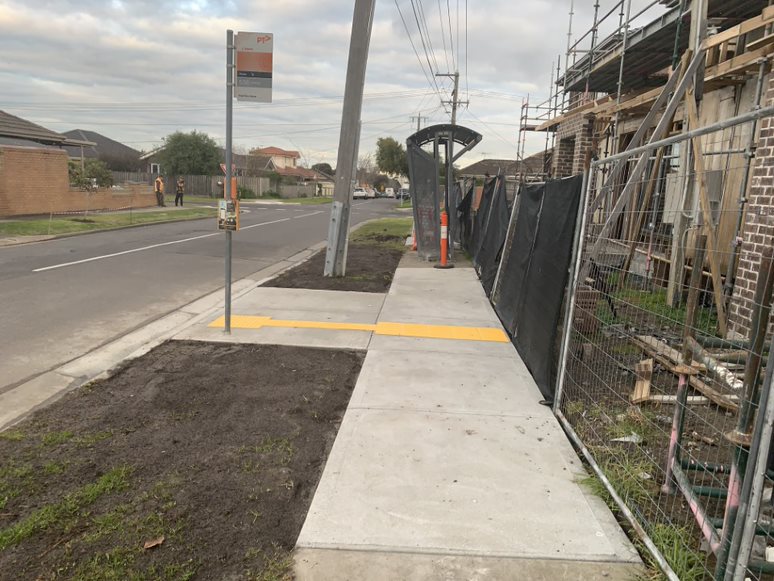
Maintenance and Operational Expenses
Maintenance and operational expenses for bus stops are crucial for ensuring their functionality, safety, and accessibility over time. These costs can be divided into several major categories:
- Cleaning and Sanitation: Regular cleaning is essential to maintain a hygienic environment at bus stops. This includes the removal of trash, graffiti, and snow or ice in colder climates to ensure the safety and comfort of passengers.
- Repair and Replacement: As time passes, bus stops might need maintenance to address damage from usage or acts of vandalism. This can involve replacing damaged seating, shelters, signage, and real-time information screens. Keeping bus stops in good repair enhances the overall user experience and safety.
- Electricity and Utilities: Bus stops with lighting, digital displays, and Wi-Fi connectivity incur electricity costs. Efficient management of these utilities, such as using energy-saving LED lighting, can help reduce operational expenses.
- Technology and System Upgrades: To keep up with technological advancements and meet changing passenger expectations, periodic upgrades to hardware and software systems are necessary. This includes updating real-time information systems and improving connectivity features at bus stops.
- Landscaping and Aesthetic Maintenance: Some bus stops feature landscaping or are integrated into urban green spaces. Maintaining these areas, including trimming vegetation and managing litter, contributes to the visual appeal and environmental quality of the bus stop.
- Accessibility Improvements: Keeping bus stops accessible to all users, especially those with disabilities, could demand regular updates. This can include maintaining ramps, tactile paving, and audible signal systems to comply with accessibility standards.
- Security and Safety Measures: Maintaining security cameras and emergency call buttons is essential for passenger safety. Regular checks and updates ensure these systems are functional when needed.
- Administrative and Staffing Costs: Personnel costs for those involved in the maintenance, monitoring, and management of bus stops and related infrastructure are a significant part of operational expenses. This includes teams responsible for cleaning, repairs, and customer service.
Challenges and Considerations
When planning and constructing new bus stops, several challenges and considerations must be taken into account to ensure the successful integration into the existing urban fabric and transportation network. These challenges can be complex and multifaceted, including:
- Funding and Budget Constraints: One of the primary challenges is securing adequate funding for the construction and maintenance of new bus stops. Budget constraints can limit the scope of projects or delay their implementation.
- Community Opposition or Support: Projects often face varying degrees of community opposition or support. Concerns may arise over potential increases in noise, traffic congestion, or changes to the neighbourhood’s character. Engaging with the community early and effectively can help address these concerns.
- Regulatory and Compliance Hurdles: Compliance with local, state, and federal regulations, including zoning laws, environmental protection requirements, and accessibility standards, is critical. Comprehending and complying with these regulations can involve a thorough and extended procedure.
- Environmental Impact: Assessing and mitigating the environmental impact of new bus stop constructions is crucial. This includes considering the effects on local wildlife, green spaces, and pollution levels.
- Land Acquisition: Acquiring the land needed for new bus stops can be challenging, especially in densely populated areas or locations where land values are high. Negotiations with landowners and dealing with property rights can complicate the process.
- Design and Aesthetics: Creating bus stops that are not only functional but also aesthetically pleasing and in harmony with the surrounding environment requires careful planning and design. This includes considering the architecture, landscaping, and overall urban design principles.
- Accessibility and Inclusivity: Ensuring that new bus stops are accessible to all individuals, including those with disabilities, is a key consideration. This involves designing stops with features like ramps, tactile paving, and adequate lighting.
- Safety and Security: It’s crucial to tackle safety and security issues. To create a safe environment for passengers, this may involve installing lighting, surveillance cameras, and emergency call buttons.
- Integration with Existing Infrastructure: New bus stops must be effectively integrated into the existing transportation network. This includes considering connections with other modes of public transportation and ensuring that bus routes are optimised for efficiency and convenience.
- Future-Proofing: Considering the transportation network’s future needs and incorporating flexibility into the design of new bus stops can help accommodate future growth and changes in technology or ridership patterns.
- Maintenance and Operational Efficiency: Planning for the long-term maintenance and operational efficiency of bus stops is critical to ensure they remain functional and serve the community effectively over time.
Addressing these challenges requires a comprehensive planning approach, collaboration between multiple stakeholders, and a commitment to community engagement and sustainable development practises in bus stop.
Final Thoughts
The construction of new bus stops is a pivotal step towards creating more sustainable, accessible, and efficient urban environments. It’s a collaborative effort that requires the support and active involvement of various stakeholders. Here’s a call to action for government bodies, community members, and environmental groups:
For Government Agencies:
- Prioritise Investment: Allocate sufficient funding and resources for the planning, construction, and maintenance of new bus stops. Consider innovative financing models and partnerships to support these projects.
- Streamline Regulations: Simplify regulatory processes to facilitate the efficient approval and implementation of new bus stop constructions. Ensure compliance with accessibility and environmental standards.
- Enhance Public Engagement: Actively engage with communities to gather input and address concerns during the planning stages. Transparent communication can help build public support for new bus stop projects.
For Community Members:
- Participate in Planning Processes: Attend public meetings, submit feedback, and engage with local authorities to voice your needs and preferences regarding the placement and design of new bus stops.
- Advocate for Inclusivity: Ensure that the design and location of new bus stops consider the needs of all community members, including seniors, children, and people with disabilities.
- Support Local Initiatives: Rally behind local initiatives and proposals for new bus stops. Community support can be a powerful catalyst for action from municipal governments and transit authorities.
For Environmental Groups:
- Promote Sustainable Practises: Advocate for environmentally friendly designs and practises in the construction of new bus stops, such as the use of sustainable materials, solar-powered lighting, and green roofs.
- Highlight Benefits: Raise awareness about the environmental benefits of expanding public transportation infrastructure, including reduced carbon emissions and improved air quality.
- Engage in Partnerships: Collaborate with urban planners, architects, and government agencies to promote best practises in sustainable design and to integrate green spaces and biodiversity considerations into bus stop projects.
Collective Action:
- Foster Partnerships: Encourage collaboration between government agencies, private sector partners, community organisations, and environmental groups to leverage resources, expertise, and community support for new bus stop projects.
- Innovate: Embrace technological innovations and smart city solutions to enhance the functionality and user experience of new bus stops, making public transportation an attractive option for all.
- Monitor and Evaluate: Establish mechanisms for ongoing monitoring and evaluation of new bus stops to assess their impact, gather insights, and inform future projects.
By working together, we can ensure that new bus stop constructions meet the needs of our communities, contribute to sustainable urban development, and enhance the quality of life for all residents. Let’s support new bus stop projects to move towards a more connected and sustainable future.


